What Weaves Between Us
By guest author, Luis Gonzales
Some paintings can have an effect similar to a soothing balm for the soul. I think this painting of Karine Léger (Montreal 1977) is a subtle and potent medicine for the moment that we are living.
The social distancing has been followed by an ideological polarization. The need for meaning to interpret the reality has led many to a search for answers and, groping in the darkness, we have become susceptible to any light colored by logic to hold on to. The fear and uncertainty, so difficult to bear by the modern human beings that have grown into security and predictability, are taking all kind of forms of anxiety and anger. The ones that dwelt in the dream of being free, have moved to a nightmare of restrictions that challenges their ideals …So, in one way or another, to one degree or another, we are going through a process that threatens all of us, with the pain of experiencing social disintegration while surrounded by the tension of polarization.
Karina’s painting presents an empty space in which two independent bodies get closer to meet. The shapes outside are not so different, but inside there are two different worlds. There is a quiet sense of balance in the composition. The top one seems to be wrapped by layers of bandage populated by ordered short black lines. The texture of the bottom one is more open and simpler. They approach and touch each other without invading each other. The top one is covered by irregular looping forms that seems to want to mirror the outline of the two bodies. One of these loops manages to imitate the sharper angles of outline, like an intention to sense the other one, to communicate, to adapt to it… or, are those loops the ripples produced by having been touch by another?
If relationships are always an invitation to explore ways to know ourselves, the others and what weaves between us, this moment is urging us to take this invitation as a desperate need to survive and build our societies. The painting of Karine Léger reflects to me the basic inner movement, the intention to understand: Who is the other one, what is being threatened in him/her and in me, and how can closeness grow? This is the tender place of connecting to one another that evil forces want to snatch away from us and that we need to preserve.
This painting brings me to these words of Rudolf Steiner from A Way to Self-Knowledge :
“But an essential characteristic of human consciousness in the sensory world requires that the soul’s self-feeling, its ‘I’-experience, though present, be muted. This gives the soul the opportunity to experience in the sensory world training in the noblest moral force: compassion. If a strong sense of self were to dominate the soul’s conscious experiences in the sensory world, then moral instincts and ideas could not develop properly. They could not bring forth the fruit that is love.
Devotion (a natural impulse in the elemental world) is not the same as what we call ‘love’ in normal experience. Elemental devotion is based on an experience of oneself in another being or process; love is an experience of the other in one’s own soul. To experience love, however, a sort of veil must be drawn in the soul over the self-feeling or ‘I’-experience present in its depths. Then, because its own powers are muted, the joys and sorrows of the other arise in the soul. In this way, love which is the source of the most genuine moral impulse in human life, germinates.”
Author, Luis González
Luis González works as a priest for The Christian Community in Sacramento (California). He is originally from the Canary Islands (Spain). He has worked as a social worker and studied Art Therapy. He enjoys thoroughly sitting in front of a piece of art.



